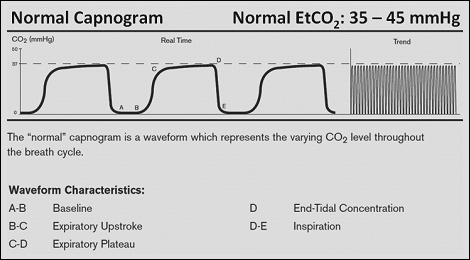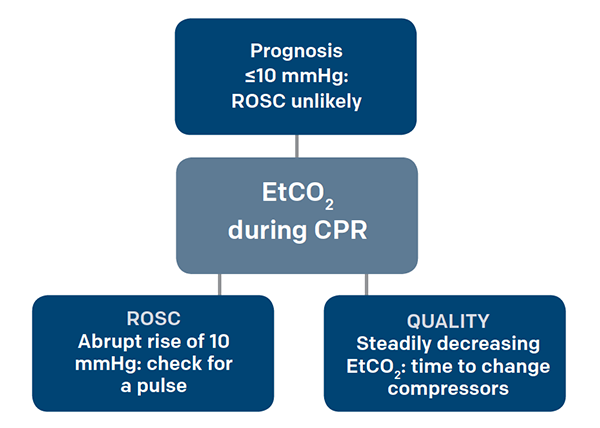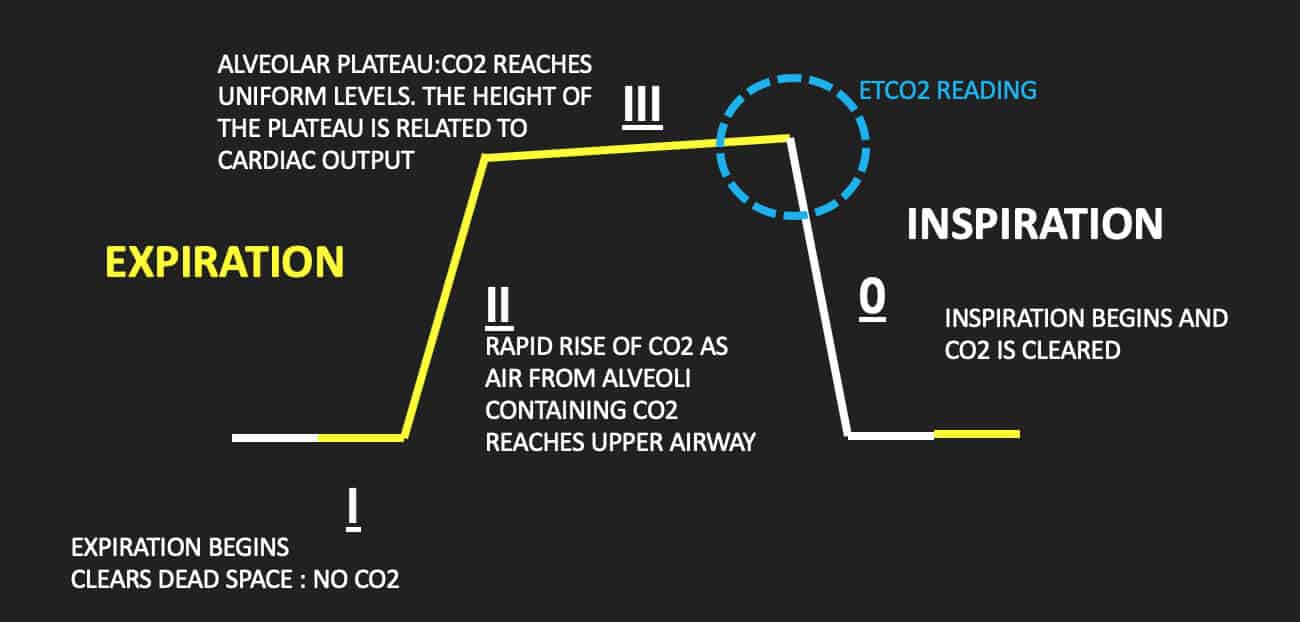end tidal co2 range in cardiac arrest
PetCO2monitoring has been useful in determining the effectiveness of cardiopulmonary resuscitation. Primary service area of an advanced life support ALS ambulance service including a city with a population of 70745 and the.

Resuscitation Statistics Download Table
End-tidal CO2 may be useful here as an easily and immediately measurable index of changes in cardiac output.
. Animal studies have shown that end-tidal carbon dioxide EtCO 2 detected during CPR is primarily dependent on pulmonary blood flow and is therefore a potential surrogate marker of perfusion during CPR46 However there. After 20 minutes of CPR death occurs if ETCO2 is consistently below 10 mmHg with 100 sensitivity and specificity 15. End-tidal carbon dioxide monitoring in cardiac arrest.
The purpose of this systematic review is to evaluate the prognostic value of ETCO2 during cardiac arrest and to explore whether ETCO2 values could be utilised as a tool to predict the outcome of resuscitation. The decreases in the end-tidal carbon dioxide concentration were associated with increases in systemic oxygen extraction r 079. Literature search was performed using Medline and EMBASE.
The first aim of the study was to investigate whether arteriolealveolar carbon dioxide difference AaDCO2 which is calculated using blood gas parameters and end-tidal carbon dioxide EtCO2 which is measured by capnography could be used as prognostic markers for patients with cardiac arrest in which ROSC is provided. More Than Just a Number. In addition a decrease in the EtCO2 during resuscitative events of 25 was associated with a.
In clinical observational studies mean ETCO 2 levels in patients with ROSC are higher. End-tidal carbon dioxide cannot be used to rule out severe injury in patients meeting the criteria. A low end-tidal CO2 may indicate poor perfusion hypovolemia or sepsis.
Studies have shown that in patients who had ETCO2 of 10 mmHg or less cardiac arrest was associated with death 13 14. During precordial compression it increased to 10 - 05 percent. In addition it has been noted that cardiac arrest causes an abrupt fall in end-tidal CO2 levels to values near zero 23.
In recent years there has been an increased interest in the use of capnometry the noninvasive continuous measurement of partial pressure of end-tidal carbon dioxide petCO2 in expired air. Pierre Kory Laura OBrien RN CNS. Because impaired circulation during arrest causes CO2 to build up in the bloodstream the initial ETCO2 reading may initially be higher than the normal 35-45 mm Hg range as it gets washed out of.
Measuring end-tidal CO2 in cardiac arrest patients is helpful for. Predicting likelihood of return of spontaneous circulation ROSC in that a persistently low ETCO2 tends to predict death whereas a high or rising ETCO2 is associated with a higher chance of ROSC. End-tidal carbon dioxide monitoring in cardiac arrest.
Measurement of end-tidal expiratory pressure of carbon dioxide ETCO 2 using capnography provides a noninvasive estimate of cardiac output and organ perfusion during cardiac arrest and can therefore be used to monitor the quality of CPR and predict return of spontaneous circulation ROSC. End tidal carbon dioxide CO2 correlates with cardiac output during cardiopulmonary resuscitation in cardiac arrest patients. CO2 will decrease prior to a cardiac arrest in patients that are intubated in an intensive care setting.
Over the past couple of years at least five studies have included measurement of ETCO2. End tidal CO2 in cardiac arrest. An increase in etCO2 by 5 appears to have reasonable sensitivity 71-91 and specificity 94-100 for fluid responsiveness in two studies of patients breathing passively on the ventilator.
The end-tidal carbon dioxide concentration decreased from a mean - SD of 14 - 09 to 04 - 04 percent after the onset of cardiac arrest. Although the normal range for CO2 should be between 35-45mmHg CO2 monitoring gives healthcare providers a lot more insight into what is going on with a patients condition. A Systematic Review This article is a systematic review and meta-analysis of existing data on the subject of whether any level of end-tidal carbon dioxide ETCO 2 measured during.
The data presented in this article are related to the research article The Use of End-Tidal Carbon Dioxide ETCO 2 Measurement to Guide Management of Cardiac Arrest. To assess the prognostic value of initial end-tidal CO2 pressures PETCO2 during CPR in patients with out-of-hospital cardiac arrest OHCA. During cardiac arrest the partial pressure of end-tidal carbon dioxide PetCO2 falls to very low levels reflecting the very low cardiac output achieved with cardiopulmonary resuscitation CPR.
An accurate early predictor of the outcome of resuscitation is needed. The successfully resuscitated group had constant Pco 2 levels throughout the 15 min of cardiac arrest from 68 11 to 62 12 mm Hg. Increasing CO2 during CPR can also indicate the return of spontaneous circulation.
A significant decline in end-tidal Pco 2 levels during the resuscitation effort was seen in the nonresuscitated group from 63 08 to 34 08 mm Hg. A prospective observational study using a convenience sample. The American Heart Association recommends the use of end-tidal CO2ETCO2 as a marker of the quality of cardiopulmonary resuscitation CPR.
BackgroundPhysiology 2 Monitoring end-tidal CO 2 ET-CO 2 provides instantaneous information about ventilation how effectively CO. Increasing CO2 during CPR can also indicate the return of spontaneous circulation. Because it splits into CO2 and H20 So if rises after NaHCO3 do not.
An ETCO2 cardiac arrest. In one of largest studies to date of prehospital capnography in cardiac arrest an initial EtCO2 10 mmHg 13 kPa was associated with an almost five-fold higher rate of return of spontaneous circulation ROSC. Goals of this investigation.
End-tidal carbon dioxide monitoring in cardiac arrest Acad Emerg Med. CO2 will decrease prior to a cardiac arrest in patients that are intubated in an intensive care setting. Outcomes23 During cardiac arrest CPR functions to deliver substrate to vital organs.
On the other hand a high CO2 reading may indicate airway narrowing. Changes in expired PC02 levels during. End tidal carbon dioxide CO2 correlates with cardiac output during cardiopulmonary resuscitation in cardiac arrest patients.
During cardiopulmonary reanimation CPR the. MEASURING END-TIDAL CO 2 LEVELS DURING CARDIAC ARREST Presentation for MSBI Nurses Prepared by Dr. End-Tidal CO2 as a Predictor of Cardiac Arrest Survival.
To discuss recent studies relevant to the utility of measuring end-tidal carbon dioxide ETCO2 during cardiopulmonary resuscitation CPR and its correlation with outcome in adults experiencing cardiac arrest.

Waveform Capnography In The Intubated Patient Emcrit Project

Capnogram R Series Defibrillator Zoll Medical Uk

3 Waveform Capnography Showing Changes In The End Tidal Carbon Dioxide Download Scientific Diagram

Use End Tidal Capnography For Placing Orogastric Nasogastric Tubes And Cpr Page 2 Of 4 Acep Now Page 2

Waveform Capnography In The Intubated Patient Emcrit Project

End Tidal Carbon Dioxide Etco2 And Ventricular Fibrillation Amplitude Spectral Area Amsa For Shock Outcome Prediction In Out Of Hospital Cardiac Arrest Are They Two Sides Of The Same Coin Resuscitation

End Tidal Capnography Can Be Useful For Detecting Diabetic Ketoacidosis Monitoring Copd Page 2 Of 4 Acep Now Page 2

Reversible Causes Of Low Etco2 In Cpr Criticalcarenow
End Tidal Co2 Monitoring In The Pre Hospital Environment More Than Just Endotracheal Tube Placement Confirmation Journal Of Paramedic Practice

Sar Helicopter Paramedic Practice Etco2 Measuring To Assist With Cpr Attempts Journal Of Paramedic Practice

Average Etco2 Kpa During Cpr In Patients With Or Without Rosc Download Scientific Diagram
Emdocs Net Emergency Medicine Educationcapnography In The Ed Emdocs Net Emergency Medicine Education

Etco2 Valuable Vital Sign To Assess Perfusion The Airway Jedi

Waveform Capnography In The Intubated Patient Emcrit Project

Quantitative Waveform Capnography Acls Medical Training

Waveform Capnography In The Intubated Patient Emcrit Project

3 Waveform Capnography Showing Changes In The End Tidal Carbon Dioxide Download Scientific Diagram

